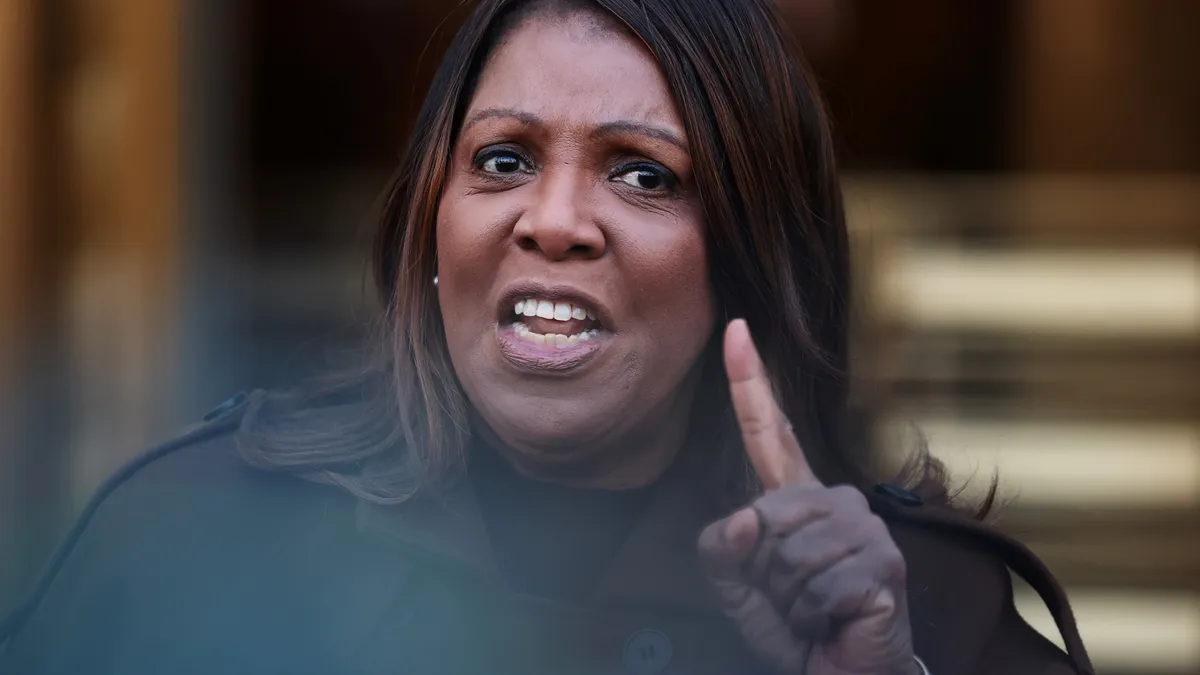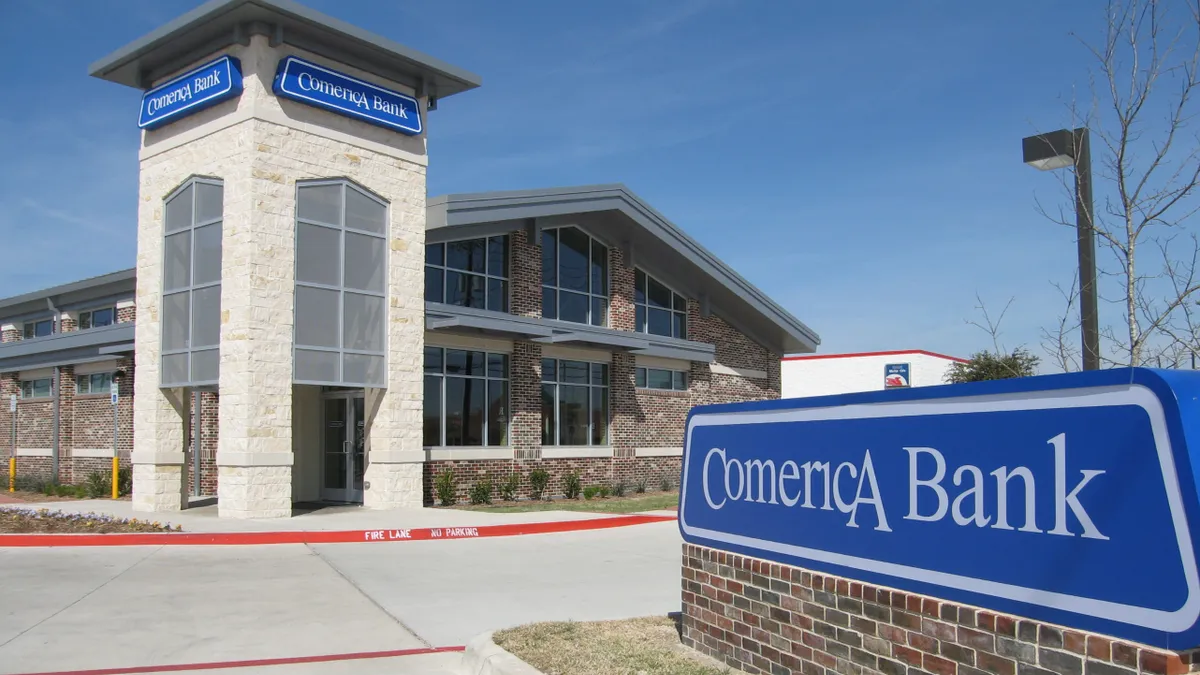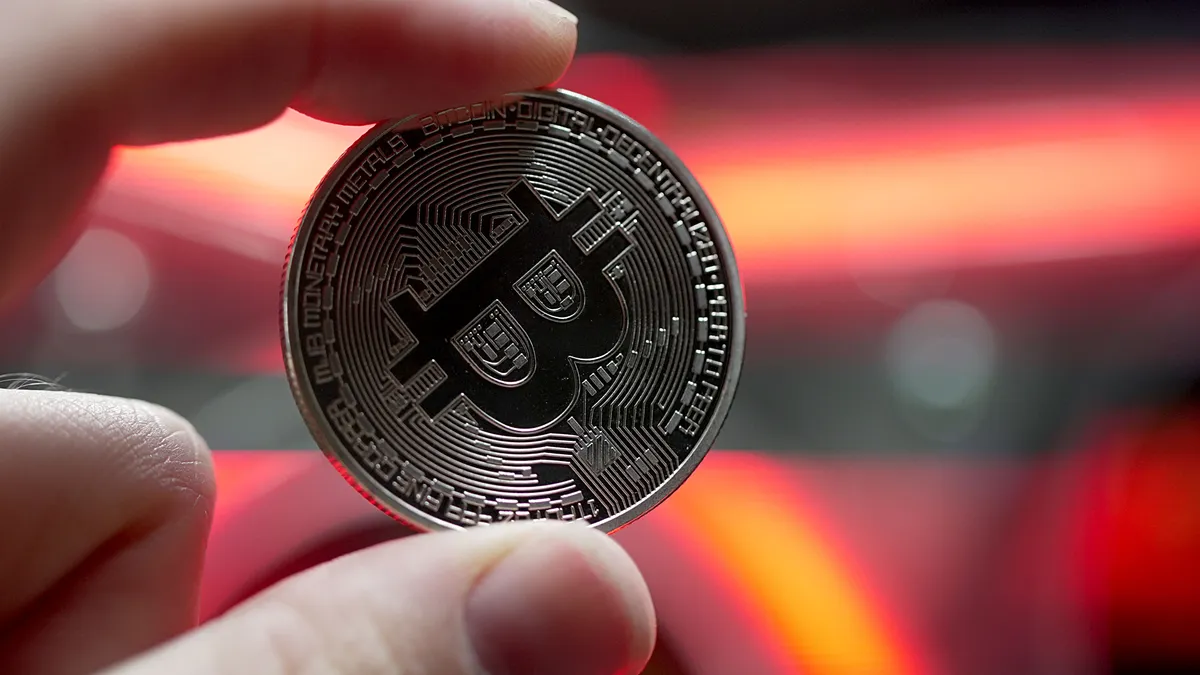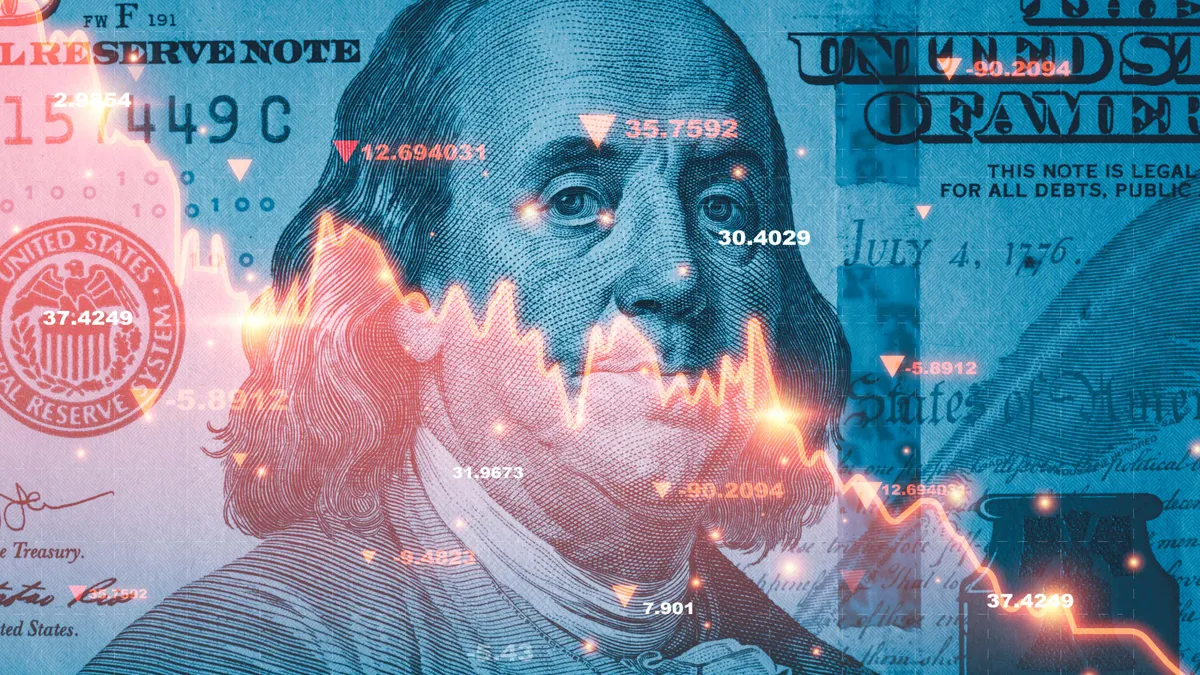Speaking Thursday at the American Enterprise Institute in Washington, Randal Quarles, the Federal Reserve's former vice chairman for supervision, made his last public appearance before stepping down from the central bank's board later this month. In it, he suggested a change to big banks' stress-testing framework, warned against stifling digital-asset innovation and cautioned the misuse of Fed emergency funds.
Here are five quotes from the speech outlining challenges met during Quarles' tenure at the Fed, and those that lie ahead for his successor at the central bank.
1. On emergency lending facilities
What he said: "Having established the precedent that the Fed can lend to businesses and municipalities for the COVID event, there will inevitably be those whose plans are grand and whose patience with democratic accountability low who will begin to ask why the Fed can't fund repairs of the country's aging infrastructure, or finance the building of a border wall, or purchase trillions of dollars of green energy bonds, or underwrite the colonization of Mars. An entity that can do that without any need for congressional appropriations, would have the vastest political consequence and political control of it would be a great prize."
Perhaps Quarles' sharpest caution came in connection with the 13 emergency lending facilities the central bank established to help curb the effects of the COVID-19 pandemic.
That there were "no major problems" with the credit facilities had more to do with good luck than structure, Quarles said.
"While political pressure related to the credit facilities waxed and waned, the economy recovered quickly enough that the facilities could be wound down within several months with relatively little opera," he said. "The reopening of the economy and rapid recovery that began in May of that year was a major reason that material losses, political pressures, and operational problems were avoided."
Quarles' misgiving with the emergency measures center around the "distinction between liquidity facilities designed to bolster market functioning by providing short-term loans to financial firms when such credit is suddenly not available, and what I would call credit facilities, which support the extension of long-term credit to the real economy — households, businesses, and governments," he said.
The former, he said, are "largely 'wholesale'; the term of the funding … is generally quite short; operating them calls on expertise that Fed staff either have or that is quite similar to existing expertise; the risk of loss is minimal ... and withdrawing from them is relatively straightforward."
The latter, meanwhile, "are largely 'retail'"; their end users — households, businesses and governments — "attract significant political interest, meaning pressure for continued expansion of credit will be great; the credit facilities involve longer-term lending; operating the credit facilities requires expertise that the Fed does not have ... and the potential for troubled loans (and thus potential loss) is material," Quarles said.
Continuing to lean on emergency Fed funds while circumventing Congress "would encourage dangerous fiscal irresponsibility, and the attendant pressures would turn us from a technocratic, nonpolitical institution with a crucial but focused mandate and great autonomy in the pursuit of that mandate, into the most politically entangled organization in the country —and the damage to our core monetary policy and financial regulatory mission would be great," he said.
Quarles recommended Congress "create a structure to transfer the ongoing funding and governance of the credit facilities into a non-Fed vehicle that will fund, manage and eventually wind down the extraordinary credit support" should the central bank be called on again to use credit facility-establishing authority.
2. On digital assets
What he said: "Regulators need not treat these activities differently simply because of the nature of the technology. We must focus with care on the unique risks posed by these activities and avoid unnecessarily impeding their promise. For that reason, I am hopeful that regulators will show reasoned constraint in the regulation of digital assets."
Quarles noted "legitimate concerns" digital asset providers should address. The asset's structure, he said, "must be stable (no fractional reserve; no liquidity mismatch; limited currency volatility), the consumer must be protected (clear legal claims on asset pools), and criminal activity must be deterred (transparency to law enforcement)."
Once those issues are satisfied, "we should let the ingenious and inventive private sector move rapidly," Quarles said.
The stablecoin report issued by the President's Working Group "sensibly" discusses risks but "contemplates approaches that I don't believe are warranted, such as limiting wallet providers' affiliation with commercial entities," he said. "It is one thing to say that a stablecoin issuer itself must be a regulated bank — I think that is probably overkill, as there are perfectly effective ways for nonbanks to meet our legitimate regulatory concerns."
"It is, however, quite another thing to contemplate that wallet providers may need to be completely separated from commercial firms," Quarles added. "It is not at all clear what regulatory interest would be furthered by such a limitation, which is much more restrictive than we require for nondigital assets."
3. On the view that Quarles oversaw the easing of stress tests
What he said: "Transparency does not mean giving answers to tests in advance — an inapt analogy given the structure of these tests — but is more akin to ensuring that students have been given the textbook. It means balancing rigor and fairness, and ensuring that the Fed's intentions are understood well enough to advance our goal — and our goal is not to develop the most recondite test, but rather for banks to improve their resilience to extraordinary stress in the financial system."
Quarles said the Fed conducted multiple stress tests throughout the COVID-19 pandemic, with three scenarios, as well as a sensitivity analysis, that included three hypothetical recessions. "Each of these stress tests assumed no additional fiscal or other measures to support the economy, and demonstrated that, even without such support, the banking industry would have fared very well," Quarles said. "In my view the resilience of banks during the COVID event, coupled with the results of our stress tests, demonstrate that the overall level of capital in the banking system is more than ample."
Despite that, Quarles has a suggestion for future stress tests. The year-to-year volatility of capital requirements for large banks in the stress testing framework "indicates that we still do not have those requirements quite right," he said.
"I think the simplest and most effective approach would be to average the results of the current year's stress test with the corresponding stress test results from the previous two years," Quarles said.
Quarles lauded another form of transparency the Fed undertook during his tenure — a twice-yearly supervision and regulation report that gives the public "insights about our supervisory process, including aggregate supervisory ratings trends and supervisory priorities for our different portfolios — information that was previously hard to find, and sometimes not public at all."
4. On leverage ratios
What he said: "As it stands, we are driving deposits out of the highly regulated banking system and requiring that cash be held in other, less stable parts of the financial sector, such as money market funds. If we enter another crisis with this issue unaddressed, the leverage ratio fundamentalists will have much to answer for."
The supplementary leverage ratio (SLR) constrains financial institutions because of a jump in the U.S. system's level of safe assets, he said.
The largest banks, Quarles said, hold $1.35 trillion in reserves, and Treasury securities encompass $1.38 trillion — "each roughly double the amount they held when our supplementary leverage ratio rule was finalized."
When leverage requirements for the largest banks were finalized, Quarles said, the Fed projected reserves would fall to $25 billion by the end of 2021. "The current total of approximately $4.16 trillion in reserves is about 165 times that amount," he said.
5. On Basel III reforms
What he said: "Endlessly increasing capital levels is not costless. In the real world, as opposed to the world from which certain pundits and kibitzers make their occasional visits to our planet, excessively high capital levels constrain the ability of the banking system to provide credit to the real economy, and we pay the cost in jobs and living standards."
Policymakers will need to determine where to adjust other areas of the capital framework, Quarles said, singling out the surcharge for global systemically important banks (G-SIBs). The U.S. calibrated its G-SIB surcharge at twice the internationally agreed level, Quarles said, adding that it vowed to revisit that level periodically as conditions changed. "We have not followed through on our commitment," he said.





















